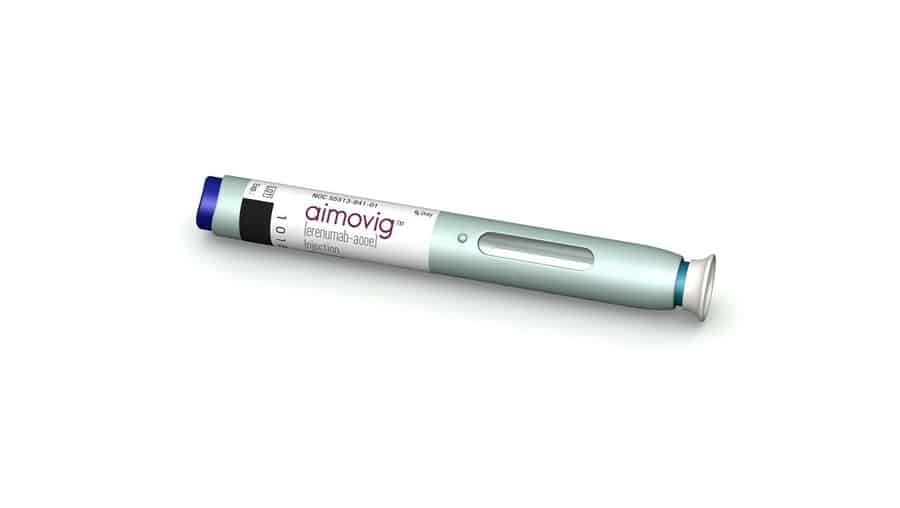
Migraine sufferers across the U.S. have their eyes on a newly approved drug that’s offering hope for reducing the frequency of monthly migraine attacks.
On Thursday, the U.S. Food and Drug Administration approved Aimovig for the preventive treatment of migraines in adults with episodic or chronic migraines. Episodic migraine is when symptoms occur up to 14 days each month; symptoms of chronic migraine occur 15 days or more a month.
Aimovig is the first FDA-approved preventive migraine treatment in a new class of drugs that work by blocking the activity of calcitonin gene-related peptide, or CGRP, a molecule that is involved in migraine attacks. Aimovig targets that molecule’s receptor in your body.
The treatment, administered through monthly self-injections, requires a prescription and could be available to patients within a week. Aimovig is expected to cost $575 monthly or $6,900 annually in the United States.
There are three other migraine treatments in this newly emerging class of drugs.
Those drugs target the CGRP molecule itself, instead of its receptor. They are experimental but, if approved, might be made available to patients as early as this fall for one and next year for the others, said Dr. Stewart Tepper, director of the Dartmouth Headache Center at Dartmouth-Hitchcock Medical Center in New Hampshire, who was a clinical investigator in the Aimovig trials.
“When CGRP is released, outside of the brain, it causes inflammation and blood vessel dilation — the blood vessels get big — and that combination of inflammation and blood vessels getting big is the pain of migraine,” said Tepper, who is also a professor of neurology at the Geisel School of Medicine at Dartmouth College.
Migraines are three times more common in women than in men and affects more than 10 percent of people worldwide, the FDA noted. In the U.S., about 12 percent of the population gets migraine headaches.
The effectiveness of Aimovig was evaluated in three key clinical trials.
“It may not get rid of all of them, but it really dramatically improves the frequency, severity and duration of the migraine attacks,” Tepper said of the new treatment.
Treatment options for migraine sufferers typically depend on the frequency and severity of the migraine attacks. Patients who have episodic migraine usually rely on pain medications to treat the migraine pain. To avoid episodes, some patients may stay away from triggers, such as certain foods, lack of sleep or stress.
Before Aimovig, “the FDA-approved preventive medications for episodic migraine were only four. Two of them are beta blockers, anti-blood pressure medicines, and two of them are anti-epilepsy drugs,” Tepper said.
Additionally, there are medical devices such as a FDA-approved nerve-stimulating “tiara” called Cefaly, another nerve-stimulating device called gammaCore and even an approach called transcranial magnetic stimulation. Some patients have turned to acupuncture for migraine therapy.
